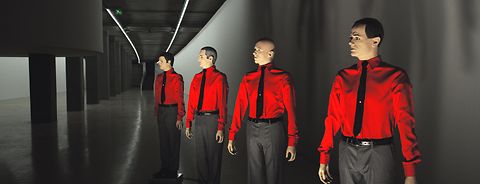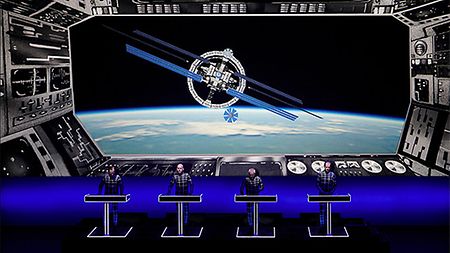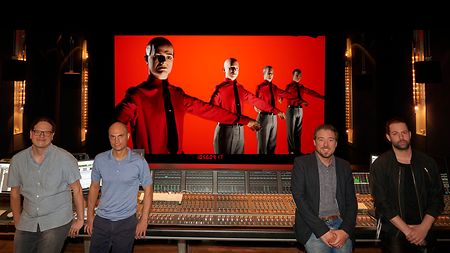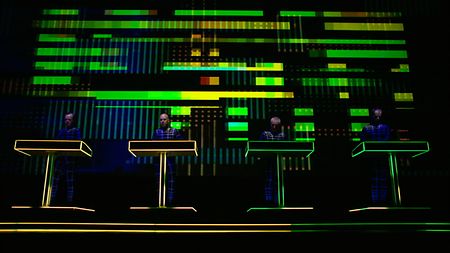Kraftwerk has been making music history for almost five decades now. These pioneers of electropop are acknowledged as the forefathers of several musical genres as well as a major influence for well-known musicians around the world. Ever since their formation in 1970 in Duesseldorf, Kraftwerk has always used cutting-edge technologies to create their works of performance art.
New, revamped versions of Kraftwerk classics were released at the end of May 2017, together bearing the name "3-D The Catalogue." One of the options for fans is a Blu-ray Disc of Kraftwerk's spectacular multimedia concerts held at the Museum of Modern Art in New York, the Tate Modern in London, and the Neue Nationalgalerie in Berlin, to name just a few of the tour venues filmed in high-resolution 3D and with state-of-the-art sound. The big challenge for the Blu-ray was finding a way to reproduce the enormous 3D wall on stage behind the band members Ralf Hütter, Fritz Hilpert, Henning Schmitz, and Falk Grieffenhagen, in 3D on the disc. Extremely light-sensitive cameras are needed to make that kind of video, and the polarization filters reduce the image brightness by half again, which means that the cameras have to meet the most demanding standards. The band members weren't about to rely on other people's recommendations when choosing the right system; they arranged for all the appropriate camera systems to be sent and they tried them all out for themselves. In the end, Kraftwerk, together with cameraman Sebastian Cramer, decided upon the ALEXA system because, as the band stated, it was the only camera that delivered enough brightness when faced with the difficult lighting conditions at the live concerts. Ultimately, the performances were filmed stereoscopically with two ALEXA cameras in a mirror rig fitted with polarization filters.

Kraftwerk and ARRI go to the movies together
Kraftwerk chooses to use two ALEXA cameras from ARRI to shoot their concert film "3-D The Catalogue" and produce the cinema version at ARRI@Bavaria Film.


